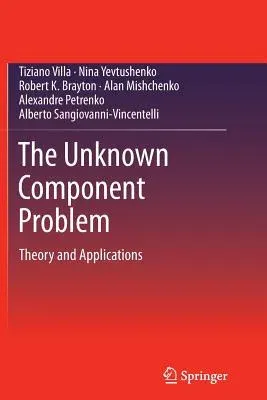Tiziano Villa
(Author)The Unknown Component Problem: Theory and Applications (2012)Paperback - 2012, 25 January 2014

Qty
1
Turbo
Ships in 2 - 3 days
In Stock
Free Delivery
Cash on Delivery
15 Days
Free Returns
Secure Checkout
Print Length
312 pages
Language
English
Publisher
Springer
Date Published
25 Jan 2014
ISBN-10
148997394X
ISBN-13
9781489973948
Description
Product Details
Authors:
Book Edition:
2012
Book Format:
Paperback
Country of Origin:
NL
Date Published:
25 January 2014
Dimensions:
23.39 x
15.6 x
1.75 cm
ISBN-10:
148997394X
ISBN-13:
9781489973948
Language:
English
Location:
New York, NY
Pages:
312
Publisher:
Weight:
458.13 gm

